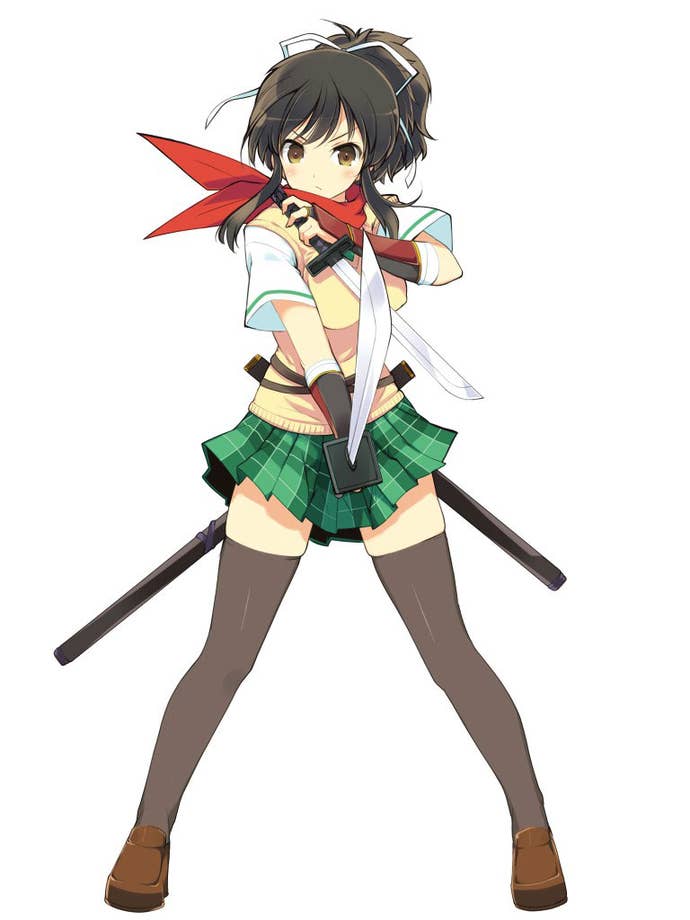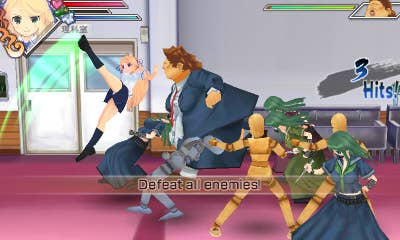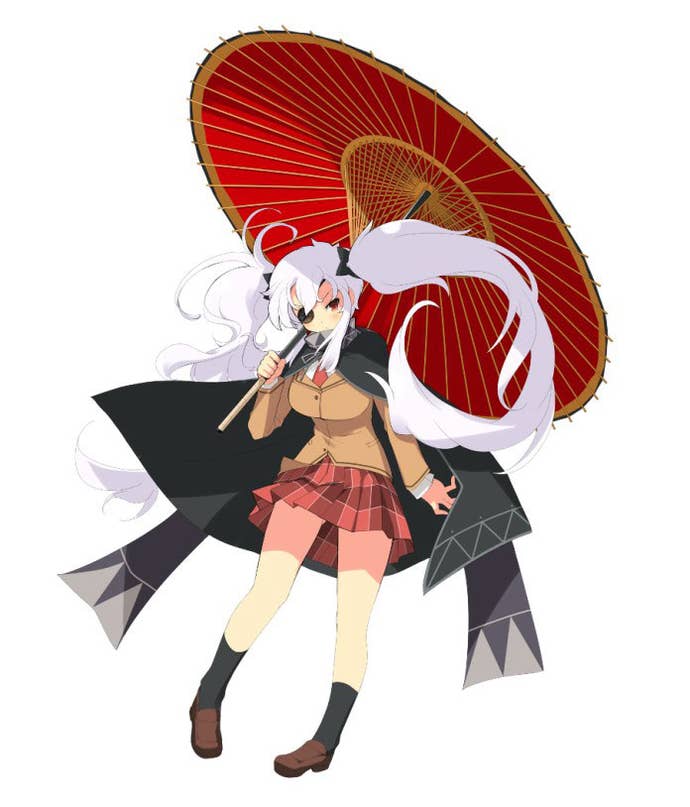JPgamer: Life and Hometown
In this week's installment of our weekly Japanese gaming column, Pete takes a look at the controversial Senran Kagura Burst for 3DS. Is there a game worth playing beneath all the fanservice?
This article first appeared on USgamer, a partner publication of VG247. Some content, such as this article, has been migrated to VG247 for posterity after USgamer's closure - but it has not been edited or further vetted by the VG247 team.
Senran Kagura Burst may be old news to some North American players, but being USgamer's resident European, I've only just had the chance to get my hands on it -- and in physical form, too! -- so I thought now might be a good time to take a look at it.
Senran Kagura Burst is, of course, notorious for its more fanservicey elements, and indeed it is full of panty shots, jiggling bosoms and physically improbable costumes -- I won't deny that. But what I wanted to address today was, well, everything else about the game, since to dwell on the fanservice too much is to do the game, its characters, its writing and its stellar localization by Xseed Games something of a disservice -- not to mention the fact that the fanservice is an aspect that a lot of people don't bother to look beyond.

Longtime readers of USgamer will, of course, know that this is exactly what Xseed Games' Brittany Avery argued in our in-depth exploration of "otaku games" from a while back -- and again in a recent conversation with Tiny Cartridge's JC Fletcher -- but having played the game now, I can independently confirm that yes; there is a lot to like here.
The first thing that struck me before I even got into the bulk of the story was simply how enjoyable and satisfying the "game" part is. It's an old-school Streets of Rage-style brawler at its core; simple, sure, but the kind of game we don't see all that much these days, so a refreshing change from the norm. And although the levels I've played so far have all been fairly straightforward to survive, getting the elusive "A" rank on each is more of a challenge; good performance, particularly once you start coming up against tougher enemies, depends on coming to understand the way the five different characters work and how you can best use their abilities to your advantage.
And those five characters are markedly different to one another in terms of how they play, too: Asuka is a fast-attacking character thanks to her dual kôdachi, Ikaruga has a hefty range thanks to her long katana, Yagyuu has slower, powerful attacks with her umbrella, Katsuragi has powerful unarmed attacks (and consequently quite a poor range) and finally Hibari has weak attacks that hit lots of times. Add to that the fact that each character learns new "Secret Ninja Arts" attacks as they level up, each of which has their own range, area of effect and special functions -- be it dealing devastating damage, knockback or inflicting a stun effect -- and there's a surprising amount more depth than might initially appear. On top of all that, there's the Yin and Yang systems, which unlocks new moves and capabilities depending on whether you're fighting in your chosen character's normal costumes or the bizarre swimsuit-clad "Frantic" mode, and you can hopefully see how there's plenty of incentive to go back and replay the levels again once you're done with the story.


And the story, so far at least, is interesting and well-told, alternating in its early stages between short, silly slice-of-life episodes such as the seemingly cold and emotionless Yagyuu admonishing the normally exuberant Hibari for not being assertive enough, and more in-depth studies of the characters and their motivations through lengthy visual novel sequences.
It's the latter aspect I was most surprised to see, since it's barely been mentioned in coverage of the game I've seen to date. Prior to playing the game for the first time, I was under the impression that the story would be delivered entirely through short talking-head dialogue sequences -- of which there are still plenty, mind you -- but instead, I was confronted with lengthy sequences that dealt not only with how the characters interacted with one another and the lead-in to the fight sequences, but also their personal histories, their context in the game's setting and their day-to-day life outside of training to be a shinobi.
The novel sequences don't stick to a single "main" character, either, which is nice. Initially, we learn a bit about how Asuka feels conflicted between her life as a shinobi and hormonal teenage concerns such as, of course, boys; subsequently, we get to see through the eyes of Katsuragi, Ikaruga and even the girls' trainer Kiriya. Each novel sequence, although wordy, provides the kind of deep insight into a character's personality, history and motivations that we don't often see in more "cinematic" games more concerned with funnelling you from action sequence to action sequence as efficiently as possible. Senran Kagura takes great, unabashed delight in these lengthy moments of downtime, giving you an opportunity to get to know the cast on a very personal basis -- and it also makes it abundantly clear that however much the game may revel in its own sexuality at times, the people behind it, both in its original Japanese form and its translated English version, clearly care very much for these characters and want to portray them as interesting individuals with their own quirks, flaws and idiosyncrasies rather than nothing but vectors for efficient fanservice delivery.


Those characters may initially seem to be stock anime tropes -- Asuka is the slightly ditzy teenage girl; Ikaruga is the older sister, class president type; Yagyuu is a kuudere through and through: cool and detached for the most part, but showing occasional flashes of genuine affection, particularly towards Hibari; Katsuragi is a spunky, pervy and possibly homosexual girl who, at times tries to act more mature than she is; Hibari is the most seemingly immature of the group thanks to her cheerful, optimistic personality -- but over time, and through the novel sequences, it becomes clear that there's a lot more to them than at first glance. The example that Xseed's Avery most commonly gives when talking about the surprising depth Senran Kagura blesses its characters with -- a subject she'll happily chat at length about, incidentally -- is Hibari. Far from being the silly, slightly dim girl she's initially portrayed as being, she's actually a character putting up a fairly significant front against her true problems -- self-esteem issues and an inferiority complex. And she's far from the only one with interesting, very "human" character traits to discover.
Getting to know the girls of Hanzou Academy is just beginning, too; once you've beaten that respective storyline, you then get to explore the story from the perspective of the supposedly "evil shinobi" from Hebijo Academy, learning how best to make use of another five characters in combat. And, if the early parts of the Hanzou story are anything to go by, you can expect that by the conclusion, things won't be anywhere near as clear-cut as "good" and "evil."
In short, then, there's far more to Senran Kagura Burst than you might assume from the largely fanservice-centric coverage the mainstream press (and marketing, it should probably be added) has provided it with to date; take the time to get to know this quirky band of young wannabe shinobi for yourself, though, and you'll see they're a group well worth spending some time in the company of.
